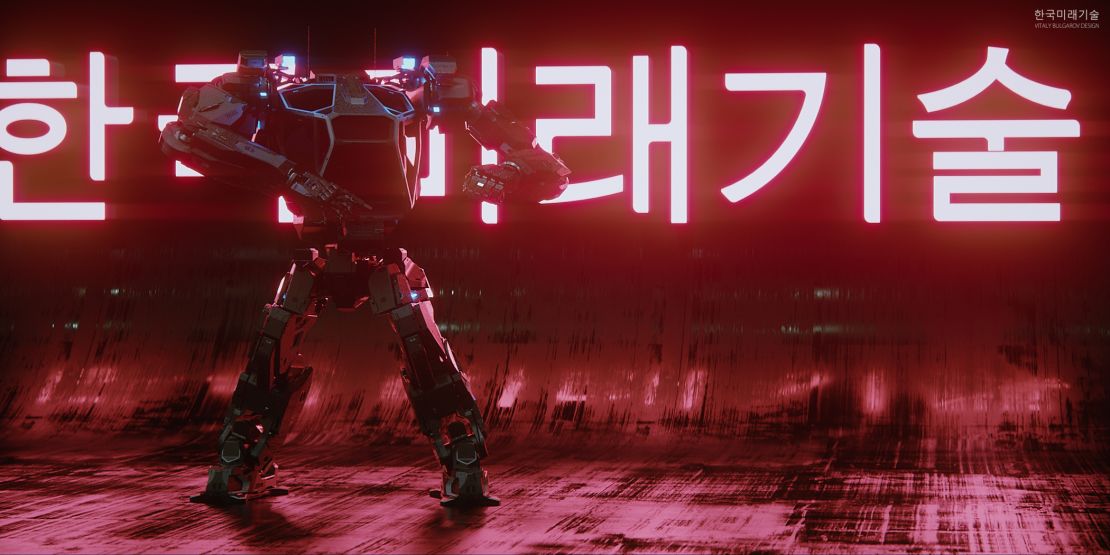Story highlights
Method-2's designer denies claims South Korean robot is a hoax
Bulgarov says the robot-suit will be finished later in 2017
It looks like a Transformer, moves like a Transformer and with a name like Method-2, it even sounds like a character from the blockbuster franchise.
But while this 13ft “robot-powered suit” is the work of Hollywood designer Vitaly Bulgarov, he says Method-2 is very real and being developed in a giant lab in Gunpo, South Korea.
Bulgarov has been involved in a number of blockbusters. His latest movie project, “Ghost in the Shell,” is a sci-fi based on a Japanese manga, starring Scarlett Johansen as a cyborg counter-terrorist field commander.
“It is fair to say that I draw knowledge and inspiration from each project I work on. And with some later movies it’s the other way around,” Bulgarov tells CNN.

Piloted robots have been a staple of Japanese animation (anime) and comics (manga), for decades in Japan and feature household names like “Gundam” and “Evangelion.”
The phenomenon then spread to popular culture abroad with cartoons like “Voltron” – originally from Japan but a hit in the U.S. – and movies such as 2013’s “Pacific Rim.”
“With robotic designs for the newer films I worked on, I was trying to bring more realism in terms of how a fictional design functions mechanically; whether it’s believable enough, how it’s structurally built,” he says.
Bulgarov’s other recent projects include designing the Lamborghini Transformer “Lockdown” and the robotic body suit for the latest “Robocop” reboot.
However, unlike these fictional enterprises, Method-2 has some very real aspirations.
Built by South Korean company Hankook Mirae Technology, which translates to Korea Future Technology in English, the company says its goal with the Method-2 prototype is to develop technology that can be put to use in a variety of real-world scenarios.

“Future iterations could find its application in a lot of different areas, from construction and cargo loading to rescue operations,” Bulgarov tells CNN.
He says that one short-term modification includes mounting the top part of the robot-suit on to a larger wheeled platform, which enables it to pass through uneven terrain and leaves room for a “sufficient power source.”
“A modified version of that robotic vehicle is already in development and planned to operate in the Fukushima disaster area,” he says.
In March 2011, an earthquake and tsunami triggered a nuclear meltdown at the Fukushima Daiichi Nuclear Power Plant, leaking dangerous radiation and making it extremely risky for workers tasked with containing the damage.
USA vs. Japan Part II: Giant robots set to duel
Hoax?
Some media outlets have questioned the veracity of the prototype, drawing attention to Bulgarov’s professional experience as a visual effects artist, the initial lack of online presence for the firm Hankook Mirae, and skepticism surrounding engineer secrecy and the look and feel of the lab.
“It is real,” says Bulgarov. “The videos I posted don’t use any visual effects and have no computer graphics elements.” He says the only editing involved was a little bit of color and contrast correction to make it look “more clean” and “feel more cool and futuristic.”

He also argues that the website’s early inactivity was due to the fact the company hadn’t planned to unveil Method-2 until much later in 2017, and they were caught by surprise when videos Bulgarov had permission to publish to his own followers went viral.
“The company planned to do a proper press release and website release with more materials next year, when the current prototype was complete,” he says.
“We didn’t think it would go viral just yet.”
He says his team’s still refining Method-2’s functionality and exterior design.
“As you can see the legs still have no shells covers and feature a ‘naked’ frame,” he says, adding that they also need to rework the arm frames and reduce the way the arms shake when it walks.
Domo Arigato, Mr. Roboto: Japan’s robot revolution
Bulgarov says the next version of Method-2 could be ready to face the public later this year.
For now, says Bulgarov like a proud parent, “Method-2 is just a one-year-old, and like a baby making its first steps.”
CNN’s Sandi Sidhu contributed to this report

